THE GUITARS OF JAMES ORMSTON BURNS
REFERENCE & RESOURCE PAGES:
SUPERSOUND (1958) - BURNS-WEILL (1959) - FENTON WEILL (1960-65)
ORMSTON BURNS (1960-1965) - AMPEG (1963-64) - BALDWIN (1965-69)
SHERGOLD WOODCRAFTS (1967-69) - ORMSTON (1968) - HAYMAN (1970-75)
BURNS UK (1973-77) - BURNS ACTUALIZERS (1979-82) - SHERGOLD (1975-92)
BURNS-WEILL
OVERVIEW - FIRST EFFORTS - FENTON - RP1G/B - RP2G/B
FIRST EFFORTS, Jan-May 1959
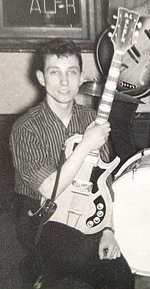
Early model with split two-piece pickguard, Besson 'Electone' pickups, and simple trapeze tailpiece.
Bought by the 18 year-old Alan Klein of the 'Al Kline Five' (sic) "as a prototype - because you'd never seen anything like it and *just had to have it* - at the end of 1958"'. Note the 'Al Klein' lettering on headstock. Al went on to record two singles with Joe Meek in 1961

Only currently-known example, Possibly the same instrument with 'Al Klein' removed, and changed tailpiece, or is perhaps a second prototype:
Differs from advertised model and design notes in having no vibrato unit, and a two-part pickguard, with the secondary plate lost.
Dating from approx. early Dec '58, this is the oldest known surviving Burns guitar (apart from the Supersounds)! Built with Besson pick-ups and Besson-supplied bridge and tailpiece, this hollow body featured a plastic back (like the Burns Weill Super Streamline RP1Gs).
Same guitar, after restoration:
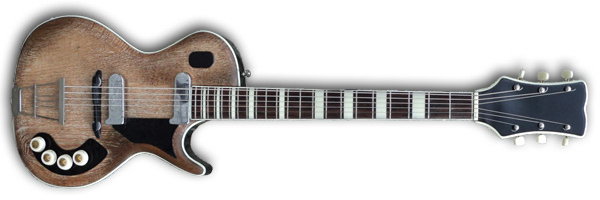
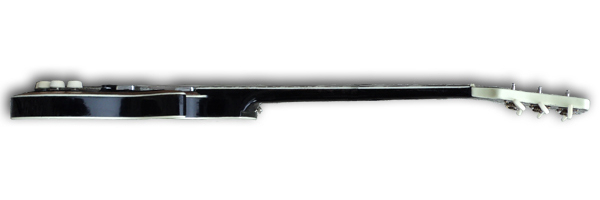
(note wild full-depth white binding on headstock sides!)
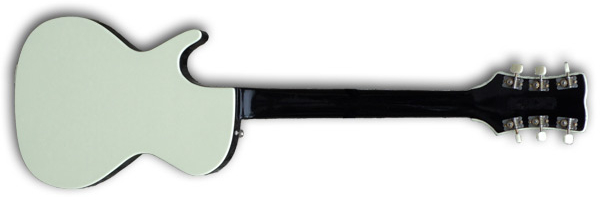
I wonder what the sticker on the back of the headstock used to say?
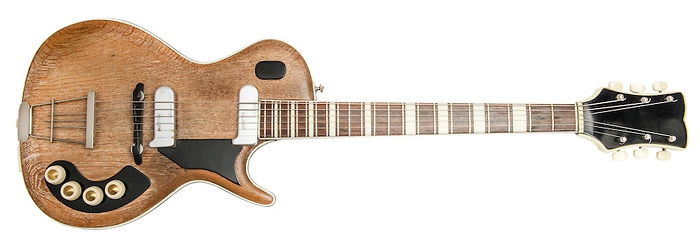
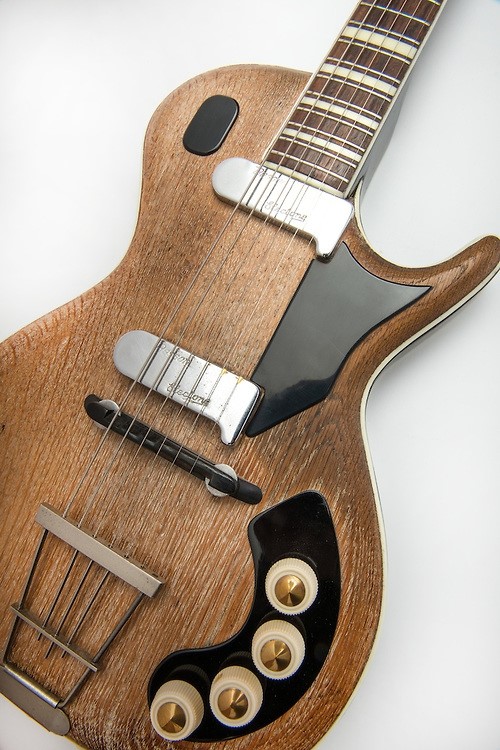



This is one of the earliest instruments built by Jim Burns and therefore among the first UK-origin solid six-strings. The neck/body chassis is virtually identical to that of the shortlived Supersound 'Ike Isaacs Short-Scale' model. This was introduced in December 1958, but by then the company had severed its association with both builder Jim Burns and endorsee Ike Isaacs. Apparently production also ceased accordingly, because apart from the prototype advertised at the time, no Supersounds of this sort have so far been documented.
However, Jim Burns stated he did actually make around 20 in total and therefore the logical assumption is that, as the design was essentially his (being closely based on a solid he built earlier in 1958 for guitarist Pete Dyke), Jim instead produced the remaining examples independently. This conclusion is corroborated by music press data and owner information, while photographic evidence from early 1959 includes four featuring the Burns-Weill badge on the headstock. These appropriately employ scratchplate-mounted electrics supplied by Henry Weill, as the split with Supersound forced Burns to make some necessary changes.
This particular guitar pre-dates all these instruments, as various aspects indicate it was made in late 1958, very soon after Jim Burns' tenure with Supersound had been terminated. It lacks a large scratchplate and is equipped with a pair of direct-mounted, Besson-branded pickups; differences that denote it was built before Jim had sought Henry Weill's services.
This is very obviously a direct descendant of the Ike Isaacs model, although the latter's two selector switches are absent. These components were supplied by Supersound and therefore no longer available to Jim, so he simply covered the relevant holes in the body top. The upper one is hidden beneath a small black plastic plate that would otherwise have held a switch, while the second is obscured by the suitably elongated control panel.
Replacing Supersound's single-coils, the two Besson Electone pickups were originally intended for archtop acoustic guitars, likewise the single-saddle wooden bridge and metal tailpiece. All have been modified by Jim to suit solid-body use, but this early un-branded Burns still has many features in common with its Supersound predecessor, including the 23-inch scale neck and a carved top body, the latter complete with a cream plastic panel forming the flat back.
Like earlier instruments made for Supersound, this guitar was built in the basement of Jim Burns' lodgings in Buckhurst Hill. Here he was helped by Peter Farrell, the son of his landlady, Louise, and all three would become fellow directors of the Ormston-Burns company, when this was established at the end of 1959. The initials B. F. are pencilled on an interior wall of the body centre section and these could stand for Burns and Farrell, offering a hidden hint to the instrument's origins.
The lack of an actual brandname doesn't detract from the significance of this six-string, as it's undoubtedly an extremely early Burns and one of very few known to still survive. It provides further proof of Jim Burns' position as THE true pioneer of the UK-made solid body, because back in 1958 the market for this type of electric didn't even exist and therefore no other British builder had considered catering for it.
The guitar has been the subject of comprehensive but considerate refurbishment, but all-important character and originality has been retained, ensuring that the very impressive end result is in keeping with this instrument's obviously high historic value.
from Historic and Notable Guitars by Paul Day, May 2012 |
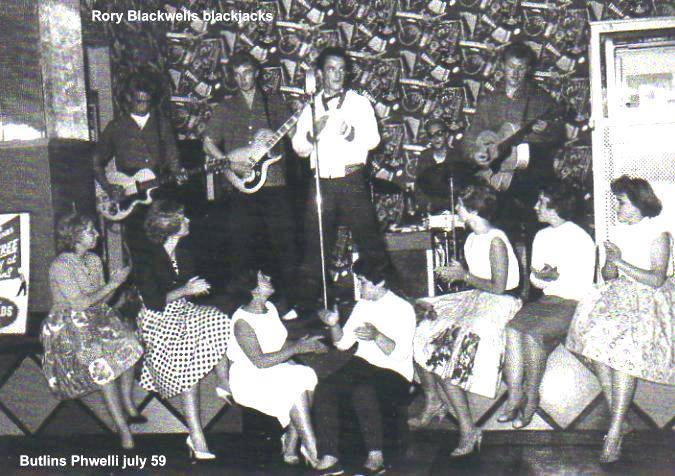
Kenny Fillingham of Rory Blackwell & The Blackjacks with Single-pickup, one knob, 1-piece pickguard version.
Rory Blackwell & The Blackjacks are credited with being Britain's first Rock 'n Roll band, and appear in the 1957 feature film 'Rock You Sinners'
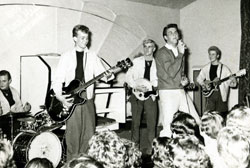
Vince Eager circa 1959, backed by Colin Green (far right) on Burns Weill guitar featuring a full-size pickguard covering most of the body front, and a pale headstock. The rhythm section is a pre-Johnny Kidd & The Pirates Clem Cattini on drums, Brian Gregg on bass.
This guitar was advertised for sale by Foote of London W.1 on 10th January 1959 at 49 Gns. (£51.45)
I wonder if the impressive guitar runs on this 1959 flipside, an audacious cover of Marty Robbins' El Paso, were done by Colin on a Burns Weill?!?
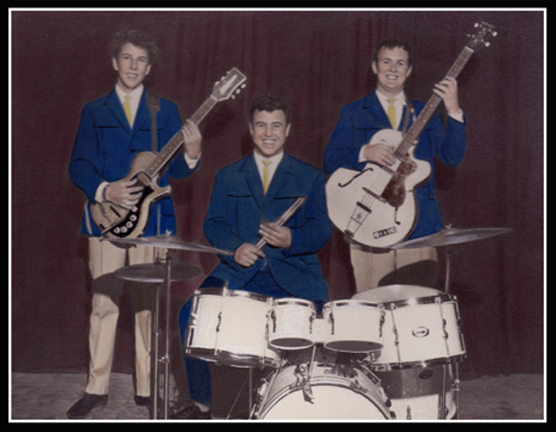
A Supersound-derived model
with large pickguard, dot markers, hard tailpiece, and (looks like a) Burns-Weill badge on headstock.
I am not sure who the band are!

Another very early 'transitional' model
Sculpted Body with headstock shape flaring to the right. Burns-Weill headstock badge, despite pickups being non-Weill Besson units. 21-fret Rosewood fingerboard with no triple dot on octave. Vibrato Unit and Metal-buttoned Van Gents might be later upgrades?
Notes from Paul Day:
It certainly is an early example and could be viewed as the 'missing link' between the similarly-shaped, Ike Isaacs-derived Burns-Weill and the Burns-Weill range proper, introduced around May 1959. Henry Weill's involvement is confirmed by the scratchplate, but the pickups (presumably original) are actually Besson-branded units intended for acoustic guitar use, rather than Weill-made single-coils. Coincidentally, Besson were the first to advertise the Burns-Weill line at that time, including an earlier mention of a 'short-scale solid' at £35 - possibly this model? That's £16 cheaper than the presumably preceding Ike Isaacs style Burns-Weill, which in turn was £15 less than the ill-fated Supersound original.
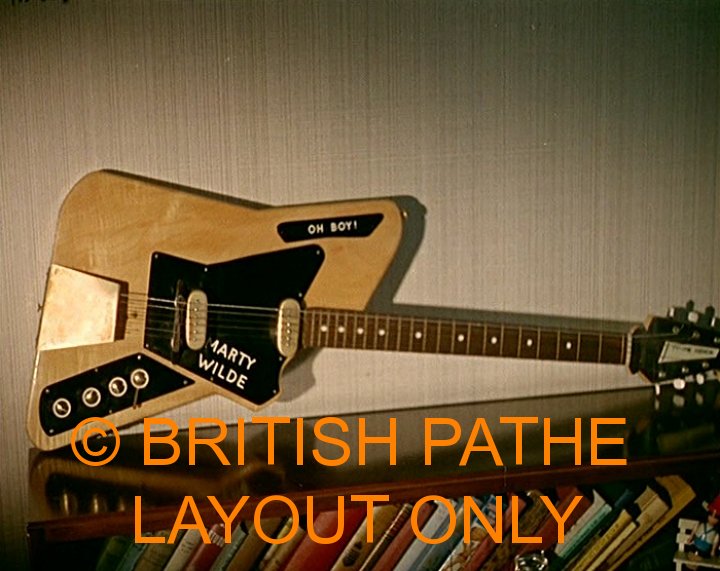
Marty Wilde's RP1G, pictured March 1962
An early prototype, presumably presented for use on Oh Boy! TV show, which ended May 1959.
Two-Piece pickguard with 4th control knob: protruding lever suggests a rotary switch?
One dot on 12th fret, 'ebonised' headstock, rosewood fingerboard.
Two-piece guard with no secondary pickguard, predecessor of the Flyte/Mirage design 14 years later!?
Where was the wiring passing through? Rectangular jack plate seems unique, to hide wider aperture for drill access to pickup routs?
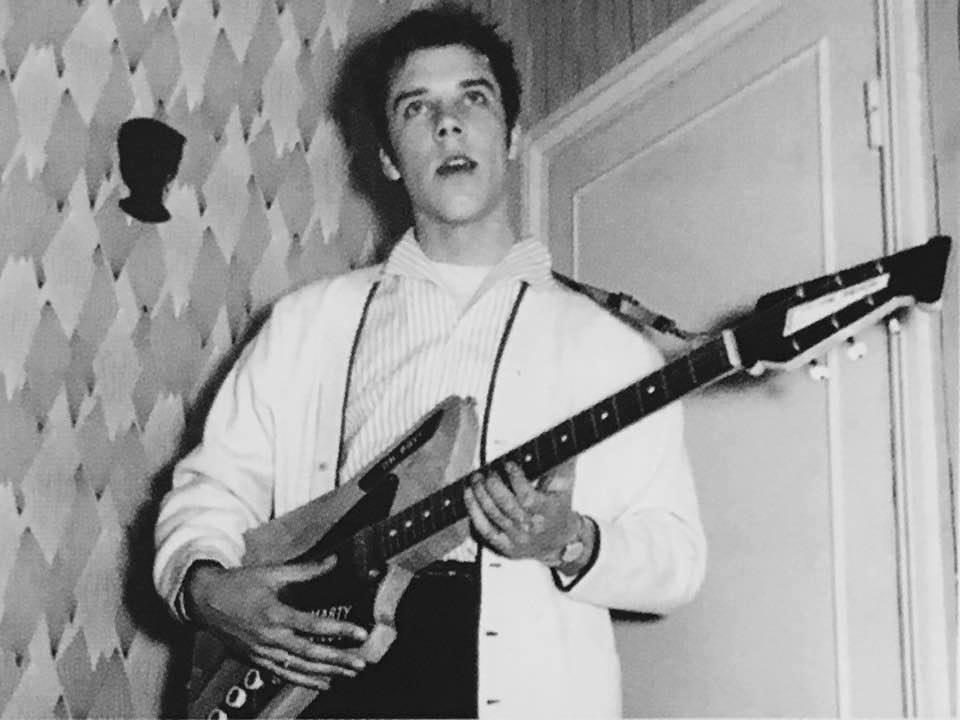
Notes from Paul Day:
My guess is that Marty Wilde’s Oh Boy special was one of Jim’s first angular design electrics, as the body styling and scratchplate are significantly different to those that soon followed. Jet Harris is pictured with a very similar four-string equivalent and both examples employ rosewood fingerboards, as do other very early Burns-Weills, with only a single or double dots at the 12th fret, preceding the more common sycamore alternative that sported Jim’s soon-to-be trademark triple dots.
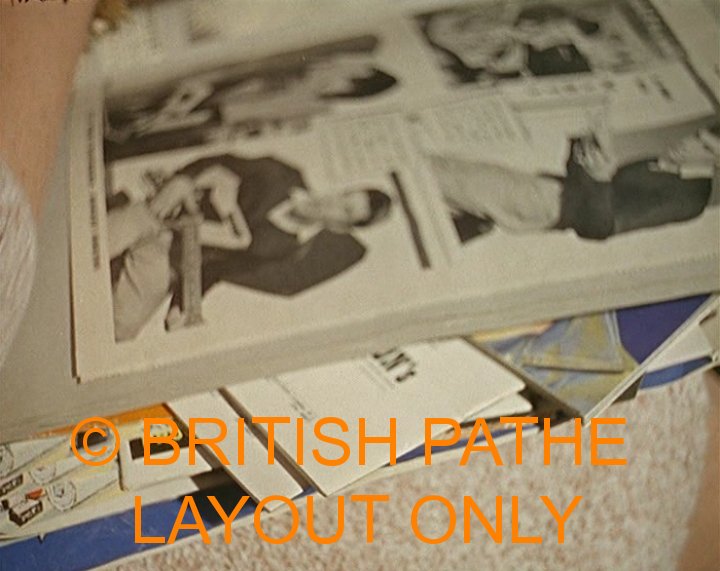
Marty pictured with it in a in a contemporary magazine, published 29th April 1959
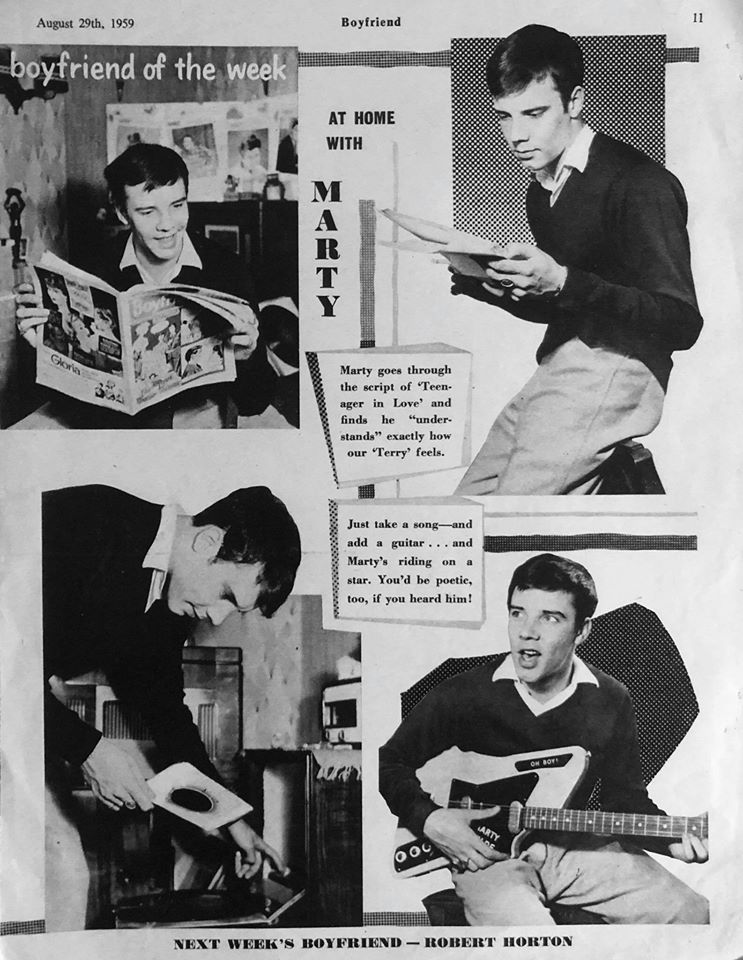
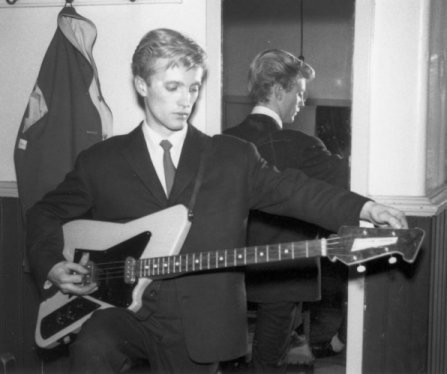
Jet Harris with Burns-Weill bass, same spec as Marty Wilde's guitar:
Rosewood Fingerboard, ebonised headstock, no 12th fret triple dot.
The full-length mirror and coat hooks behind Jet in the above picture do circumstantially imply that this is a performers' backstage area in a grand, wall-panelled older venue. Both Marty Wilde and Cliff and his band (including Jet) were the weekly resident guests on the Oh Boy! TV show's 8 month run ending May 1959, so it's worth considering that these may be prototype companion pieces, presented by the fledgling Burns-Weill company to the show's 'top stars' backstage at Hackney Empire circa February-March 1959 for promotional/artist feedback reasons. Burns-Weill was first active from January 1959, and first advertised May 1959, the same month the 'Oh Boy!' TV show climaxed, so these instruments must pre-date May 1959.
The Mungo Jerry bass:

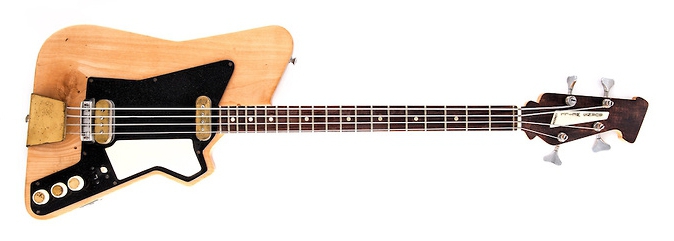
Rosewood Fingerboard, Black headstock, Now with one-piece scratchplate and uniquely-shaped 2nd pickguard. No perspex back.
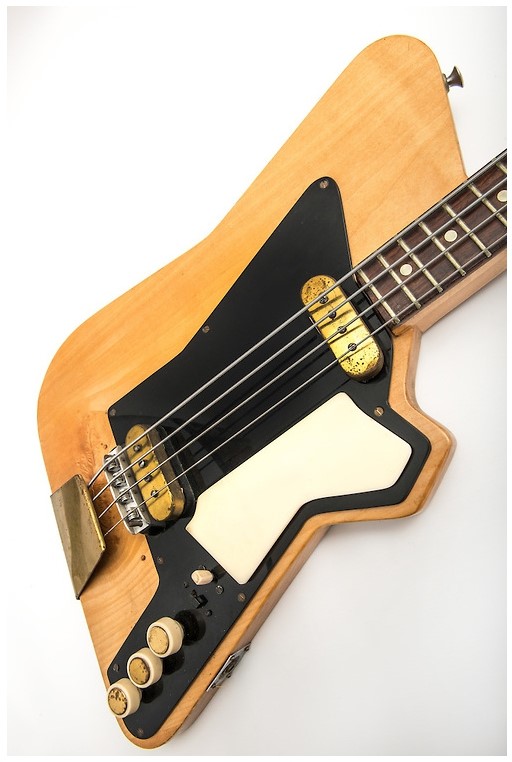
Text aligned left on nameplate. Only 20 frets. No triple-dot at 12th fret

'Roy Plummer Special' model RP1B, 'Deluxe Streamline' bass
Early example with unusual pickup positions and secondary pickguard shape/position/fixing method.
Only 18 frets, Perspex rear plate, and replacement tailpiece of different shape.
This example is now owned by Joe Cook of latimerhouse.com
















